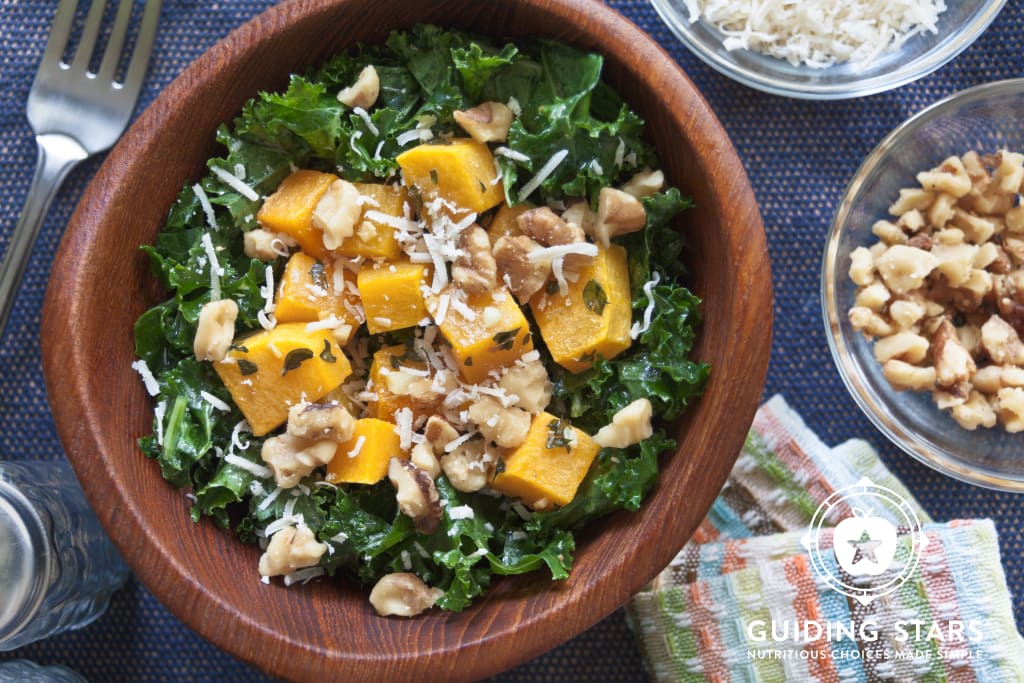
Everywhere you look these days—from supermarket to farm stand—there’s a bountiful supply of fresh fall produce. It’s a great time of year to be a healthy eater! But what if cooking some of these foods is intimidating? Or you’re not a big fan of orange-colored veggies? Not to worry, because there are plenty of autumn produce options to suit every taste, budget, and occasion. And if you need advice on cooking all these goodies, we’ve got you there too.
What are the benefits of eating seasonal produce?
Eating freshly harvested food has both personal and community benefits. First, there is the obvious financial benefit for nearby farmers and food manufacturers that use locally harvested ingredients. And there are environmental benefits from supporting sustainable growing operations. Since the produce is staying closer to home, fuel use and pollution decrease.
As an individual, there are many advantages to eating fresh seasonal produce. Fresh food can be more nutritious and, quite simply, tastes better. You may also find a wider array of organic or sustainable options. And locally grown produce is often less expensive.
There’s one additional, intangible personal benefit that we shouldn’t overlook in our modern world. Eating seasonally increases our emotional alignment with the seasons. And that’s something that’s getting harder to come by. Thanks to imported food and faster transportation, most produce is available year round. But when you buy, prepare, and consume seasonal foods, you experience a visceral feeling of connection to the land and environment around you. Eating seasonally not only does good, it feels good (and tastes good) too.
Simple, seasonal food swaps
Nobody likes everything, and that’s ok! Thankfully, there is a large variety of harvest-time options in the fall season. If you’re not a fan of one type of fall produce, you’ll probably like another option with similar nutritional benefits. Here are some ideas for easy swaps.
If you’re not a fan of…
Winter squash (butternut, acorn, pumpkin)
Brussels sprouts
Cranberries
Beets
Kale
Pears
Cauliflower or broccoli
Try…
Sweet potato or yam
Cabbage or kale
Pomegranate
Carrots or sweet potato
Collard greens, chard, bok choy
Apples, quince
Cabbage, bok choy, Brussels sprouts
Cooking tips for “tricky” fall produce
Not everyone grew up eating a wide variety of produce. And when it comes to fall produce, some of it can seem extra foreign or tricky. For example, I’d bet that many of us haven’t eaten or prepared all the types of squash available right now. I’m a fan of winter squash (I wrote about it last year on this blog). But even I didn’t try delicata squash until this year when we grew our own, so I’m certainly not judging. Preparation tips are helpful, especially for some of the more unusual or difficult-to-handle harvest offerings. Here are a few of mine:
Winter squash
Hard-skinned winter squash can be tough to cut up or peel. To make it easier, pierce it with a sharp knife in a few places to allow steam to escape. Then microwave the squash for 3-5 minutes on high power. You may also have seen a trick for cutting through butternut or acorn squash on social media. Rock the squash back and forth with one hand while cutting with the knife in the other hand. . If you’re comfortable doing that (be extra careful!), it may help.
Roasting (baking) and microwaving are simple and common ways to cook winter squash. Or you can try something a little more adventurous, like stuffed squash, pureed squash, or a squash-based casserole or stew. The methods and time required to cook squash can differ widely. So be sure to look for recipes that are specific to the exact type of squash you have.. And choose recipes that genuinely appeal to you—there’s a big wide world of squash recipes out there.
Here are a few of my favorite winter squash recipes:
Cruciferous vegetables
The cruciferous vegetables are a diverse group that includes cabbages (red, green, savoy, Napa), kale, Brussels sprouts, collard greens, arugula, bok choy, cauliflower and broccoli, watercress, and radishes. And the ways to prepare them are equally diverse. They can be consumed in raw or cooked states, but certainly some are more commonly consumed raw (arugula and watercress, for example).
Cabbage and bok choy are two of my all-time favorite vegetables. I eat them all year round, and especially in the fall. They are low in calories, high in fiber, and versatile. You can add them to most anything, but my go-to is tossing them into soups and stews. They pick up the flavors of other ingredients, making them an easy addition to skillet meals, stir-fries, and casseroles. If you don’t like the smell of cabbage cooking, look for slow cooker recipes that use cabbage. I also recently learned how to ferment cabbage to make my own sauerkraut. It’s easy to do, inexpensive, and so delicious! Kimchi is next on the fermentation experimentation list at our house.
Here are a few of my favorite cruciferous recipes:





